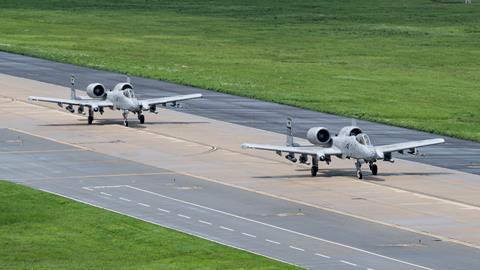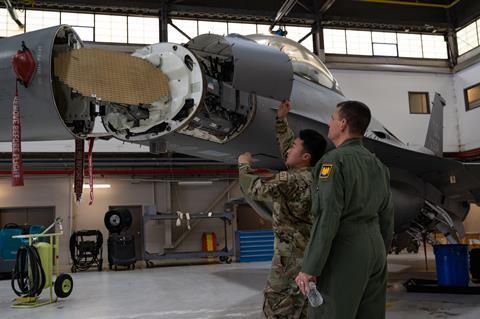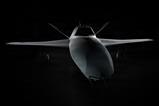The US Air Force (USAF) will press ahead with plans to retire its venerable fleet of Fairchild Republic A-10C ground-attack jets in 2025, including the withdrawal of a forward stationed squadron from South Korea.
The service said on 11 November that in January it will start a phased pull out of the 24 A-10s assigned to Osan air base south of the capital Seoul. Withdrawal of those jets, which are assigned to the 25th Fighter Squadron, will be completed by October 2025.
In place of the A-10s, the air force will assign more capable fighter aircraft to the region, including modernised Lockheed Martin F-16s, Boeing F-15EXs and Lockheed F-35As.
“This is a deliberate shift towards integrating next-generation aircraft that will significantly enhance operational effectiveness and US force posture in the Indo-Pacific region,” the USAF says.

The air force has not yet disclosed its specific plans for the South Korea-based A-10s after their withdrawal, nor which aircraft will be assigned to the 25th Fighter Squadron to replace them.
However, the service plans to at least partially offset the ground-attack jets with newly modernised and more-capable F-16s, which already assigned to the Korean peninsula.
The air force is in the midst of a multi-year effort worth more than $6 billion to upgrade its older Block 40 and 50 F-16s to bring them in line with the latest Block 70 F-16V being assembled by Lockheed in Greenville, South Carolina.
Those improvements include a new mission computer, modernised cockpit, improved networking capability, new electronic warfare capability, a communications suite upgrade and the latest Northrop Grumman APG-83 Scalable Agile Beam Radar, which provides significant improvements to air-to-air combat capacity.
Elsewhere in the Western Pacific, the USAF has already announced plans to permanently station its new F-15EX strike fighters in Japan, replacing the older F-15C/Ds that are being retired from service.
Additional F-35As will also be assigned to US bases in Japan.
“By introducing advanced fourth- and fifth-generation aircraft… we are significantly enhancing our overall air combat capabilities in the Korean theatre,” says Lieutenant General David Iverson, deputy commander of US Forces in Korea.

Iverson also commands the US Seventh Air Force, which is responsible for air operations around the Korean peninsula and northwest Pacific.
He says the stealth and advanced sensor capabilities of the F-35, alongside the massive payload and versatility of the F-15EX, will more than offset the loss of the aged A-10s.
“These aircraft bring unparalleled multi-role versatility, advanced stealth features, and superior operational range, positioning us to effectively counter modern threats and support our regional allies,” Iverson says.
Boeing began delivering operationally configured F-15EXs to the USAF in June.
The air force has sought for years to retire the Cold War-era A-10, which top service officials argue lacks the capability to effectively engage targets and survive contested airspace in a modern conflict.
Elected lawmakers in Congress blocked that goal for years, before finally relenting in 2022 with approval for a modest round of initial retirements, which began in 2023.
Congress approved further reductions to the A-10 fleet in the USA’s 2024 defence budget.
Draft language included in the yet-to-be-passed 2025 National Defense Authorization Act would again reduce the that fleet to 96 aircraft from the current required level of 135 A-10s.































